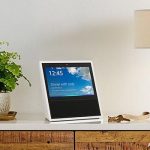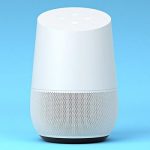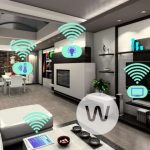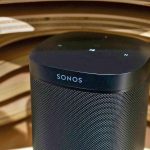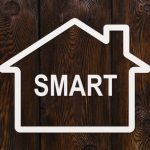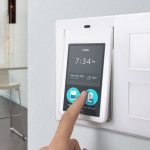“Smart Homes?” Not Until They’re Less Dependent On The Internet
Buying into a smart home ecosystem is sort of like selecting a holy grail in the Temple of the Sun. Choose poorly, and everything crumbles.
Just look at the Revolv hub, which was acquired by Nest (itself owned by Google parent company Alphabet) in 2014. Next month, Nest will shut down the Revolv service, rendering its home control smartphone apps inoperable. Those who spent $300 on the hub will have to find a replacement to control their smart door locks, light bulbs, and thermostats.
Nest is now providing full refunds to Revolv customers—an offer that followed a wave of negative publicity—but the incident still illustrates how investing in any smart home system that relies on a single company’s servers is a risky move. And yet, many smart home products continue to rely on the Internet, potentially causing problems for customers if the business fails, servers crash, or the companies involved adopt unsavory privacy policies.
Maybe it’s time to devise a better way, one that doesn’t involve a roundtrip to the Internet just to turn on your connected light bulbs. Here’s what it’ll take to make that happen.
The Price Of Going Offline
Cost is a major reason so many current smart home devices rely on the Internet for basic functions. Like a cheap laptop that runs web apps instead of locally stored programs, a smart thermostat or hub can keep costs down by shifting processor- and memory-intensive tasks to the cloud.
“If you want to serve up information in a local context, you need the storage to do that,” says Bob Sharp, executive vice president of Emerson, whose Sensi thermostats rely on the Internet for everything but basic on-device controls. “That’s memory and a microcontroller in the IoT devices and, in some cases, you have to have the computational processing power to be able to crunch data.”

As an alternative, a smart home device could offload some of its demands to more powerful devices on a home network, such as a smartphone or PC, but even then, the power and storage requirements can add up as users connect more appliances. “You’re suddenly looking at much more processing power to deal with the information coming out of all of your [smart home] devices,” Sharp says.
Even so, Internet connectivity needn’t be all or nothing. Osram’s Lightify connected bulbs, for instance, can create scenes, groups, and schedules without an Internet connection, and users can trigger them with wall switches and motion sensors. The Internet is only necessary for setting up new bulbs, syncing settings to phones and tablets, connecting with other online services, and of course controlling the lights from outside the home.
“I think it’s a fine balance,” says Aaron Ganick, Osram’s head of smart homes in the Americas. “People don’t want to pay for a $300 hub, but they don’t necessarily want to pay for a $20 hub that can only do a basic amount of tasks.”

Over time, that balance could shift toward greater offline support as the cost of components fall, says Ali Jelveh, whose company Protonet is trying to fund a locally controlled smart home hub on Indiegogo. Protonet’s Zoe has a listed launch price of $300—more than your average hub—but Jelveh sees price premiums as a temporary problem. Eventually, he believes cheap hubs will be powerful enough to handle what most homes require. (This is sort of the opposite of the web-based laptop analogy: These days, many people don’t need an expensive PC, even for locally stored programs.)
“The amount of computing power you need will at some point be a reflection of the size of your home, and the size of your home is not growing exponentially, or even linearly,” he says.
The Cloud As A Crutch
The Internet could also become less essential as smart home products learn to talk to each other directly.
Today, many smart home products rely on centralized hubs to connect smart home protocols like ZigBee and Bluetooth to Wi-Fi, so that users can control their devices from a phone or laptop. But in the future, these devices will likely abandon the hub and connect with each other, forming a giant mesh network that covers the whole house. That way, users won’t have a single point of failure, which was what happened with Revolv.
While mesh networks won’t directly reduce a smart home’s dependence on the Internet, they may indirectly discourage it by making local connectivity easier. The Thread protocol, for instance, will let homeowners add new devices to the network using a supported smartphone, and authenticating with a PIN, QR code, or near-field communications.
“You don’t have to go to a website and wait for a bunch of things to connect,” says Sujata Neidig, Thread Group’s vice president of marketing.
Bluetooth is planning a similar system for its own mesh network standard, says Errett Kroeter, vice president of marketing for the Bluetooth Special Interest Group. Once this happens, he imagines devices will become less reliant on the Internet: “You can have computing power somewhere in the home to take care of everything you need, and maybe a gateway in the mix if you want to have Internet access, but we don’t primarily see all the intelligence being outside the home.”
Big Data, Small Network
Of all the challenges involved in making smart homes less Internet-dependent, perhaps the biggest is finding an alternative to the ability of cloud servers to crunch immense amounts of data, even combining it with insights from outside your own home.
Voice control is a simple example. With an Amazon Echo, or with Siri on an iPhone, homeowners can control their lights, locks, and thermostats using natural-sounding commands—but only when they’re connected to the Internet.
Eventually, the connection may not be necessary. Protonet’s Zoe hub, for instance, will support some basic offline voice commands, only turning to the Internet when it fails to understand. Protonet CEO Ali Jelveh hopes these failures will happen less often better voice processing chips become available. He points to audio processing chip maker Conexant, which recently started offering a small, low-power version of its chips for smart home devices, with a built-in speech recognition engine.
“Voice recognition is becoming a commodity,” Jelveh says.
Still, voice commands are just one element of the bigger picture. Jelveh notes that even the best offline system won’t have the training set to handle a natural back-and-forth conversation, like the kind that Microsoft and Facebook are pushing with their AI “bots.” These intelligent helpers—which connect with a range of Internet services to get things done—could be instrumental in running the homes of the future, and decoupling them from the Internet would probably defeat the purpose anyway.
In a perfect world, though, even these assistants wouldn’t have an iron grip on our appliances, security devices, and lighting. We would merely “hire” the best AI to provide additional services, like restocking household goods or optimizing energy usage. As long as our devices still work offline, and are interoperable with one another—another story entirely—we’d be free to swap out assistants or bots depending on our needs.
As Osram’s Aaron Ganick says, it’s all about having fallbacks.
“The Internet should do extra things,” he says, “but not be the critical block at the bottom that tips your tower over if it gets removed.”
(40)




